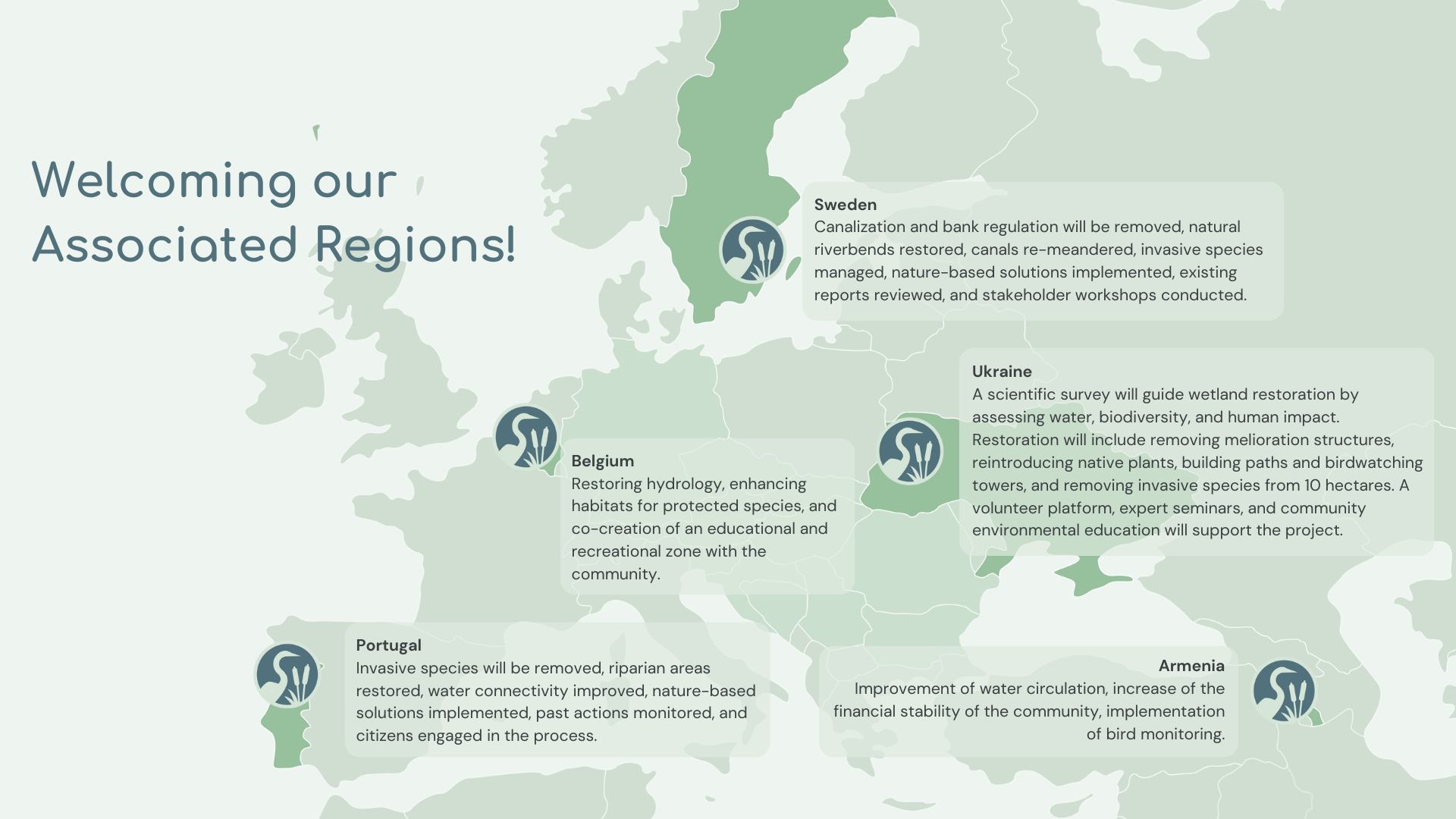
The fourth Associated Region field visit, workshop and business meetings were held in Aalst, Belgium from 16 to 19 June with a focus on the Grote Meers restoration project.
On a sunny and very warm Tuesday morning (reaching 28C), our field visit group assembled at a church in Gijzegem for our field visit to Grote Meers. We were introduced to the site by Daan Stemgée, an energetic local Natuurpunt volunteer who had been coordinating land purchases at the site for over 20 years, and Evelien Deboelpaep (Wetland Plan Officer for Natuurpunt). Daan is also one of the conservators of the “Natuurlandschap Beneden-Dender” (Nature Landscape of the Lower Dender Valley) and involved in arranging management actions and activities to generate public support. He led us on a walk to the site, pointing out that the main problem was the increasing flood risk for houses built adjacent to the Meers, which meant that pumping stations had been installed to return water to the Dender river quickly. On the other hand, droughts were becoming more frequent and affecting the wetland habitats so the aim of the restoration project was to find a way to retain water on the site for longer without increasing the flood risk.
The 22 ha plot we went through had been bought just two years previously for a massive €800,000 (with 90% from EU funds) and there were no proper paths so we tramped through the ground vegetation, sweating from the heat and humidity, for about 3 km. We encountered numerous drainage ditches (so-called “rabat” structures) dug through the alder and willow stands, as well as poplar plantations, forming wet woodlands. There were some open patches of reed and reed sweet-grass with a good variety of typical neutral wet meadow herbs. However, much of the open water was covered by the invasive watermeal or rootless duckweed Wolffia – the smallest flowering plants in the world with the highest rate of vegetative propagation. We emerged at the recreation centre in the town park. Jens De Bruycker and Inge Singelyn of Aalst municipality showed us around and described how the municipality was intending to set up a small visitor centre for the reserve and an office for Natuurpunt to organise activities. We rounded off the visit with a convivial lunch at a small cafe, Boca Delice, where we talked more about the site restoration and Restore4Life in general.
The workshop took place in the impressive municipal library, the Utopia, in the centre of the city. It was like a three-level shopping centre for books, crammed with students doing their course work (in hand writing no less). The meeting room was spartan but functional. There were about 20 participants, with Evelien, Gabriele Weigelhofer, Tim Grandjean and myself giving the presentations. An Aalst council member, Bart Van den Neste, came to welcome us. The meeting proceeded well and I was happy to collect another 13 PESTLE forms for analysis within the business and nature-based solutions work package. The preliminary instant results shown to the participants in the afternoon proved to be rather similar to those we obtained for Sweden: in both cases rather more favourable for business than our other sites.
I also had the opportunity to visit two large companies involved in water management in the Aalst area. The first was a construction company, Jan de Nul, based in Aalst, that has about 8,000 employees and undertakes water engineering projects globally. Evelien and I met with Hannelore Ruytjens, Sustainability Manager, who gave us a good account of the company’s activities to support environmental protection works (including helping at Grote Meers). Hannelore also explained how the company was investing in more energy efficient infrastructure, vessels and machinery as well as undertaking their own wetland restoration projects as viable business opportunities. My second interview was with Birgit de Bock, head of research and development at Aquafin. This company is owned and funded by Flanders region but operates autonomously to manage water supplies and treatment for the region. Birgit did not know about the Grote Meers project but was very interested to hear about it since Aquafin had recently designed and implemented technologies that could automatically alter sluices in line with rainfall forecasts to maintain water at a desired level while taking flood risk into account.
Finally, but not least, we are most grateful to Evelien and Jens for their excellent organisation and support of our visits and workshop.

